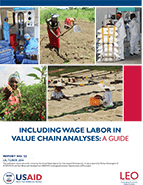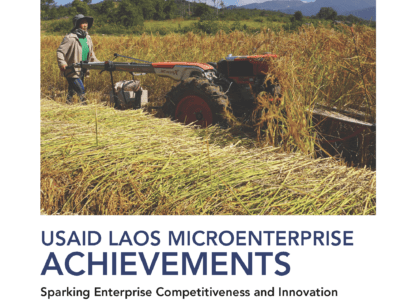
Overview
Labor is both an input to the value chain and a source of income for individuals, making it doubly important for market development projects seeking to facilitate economic growth with poverty reduction. As such, this labor market analysis guide is designed to enable market system practitioners and donors to:
- gain a basic understanding of wage labor opportunities and dynamics within target value chain(s) and beneficiaries; and
- support application of these findings into interventions that reduce poverty and improve value chain competitiveness through improved wage labor outcomes.
The recommendations included here are designed to be integrated as a component of a broader value chain analysis and adapted to specific contexts and research needs, and are therefore purposefully simple. This is not meant to cover a complete labor market assessment, or to provide in-depth guidance on conducting a value chain analysis— tools and resources for these purposes exist. Rather, projects can expect to gather the following information:
- An estimate of the relative contribution of wage labor to beneficiary household incomes (including but not limited to agricultural producers), sources of wage labor income across the year; livelihood survival strategies and desirability for wage work vis a vis other available economic activities; and constraints and opportunities faced in engaging in wage labor
- An indication of wage labor supply, demand, characteristics (quality, quantity), dynamics and performance impacts across target and ancillary value chains; including agricultural and nonagricultural goods, inputs and services.








